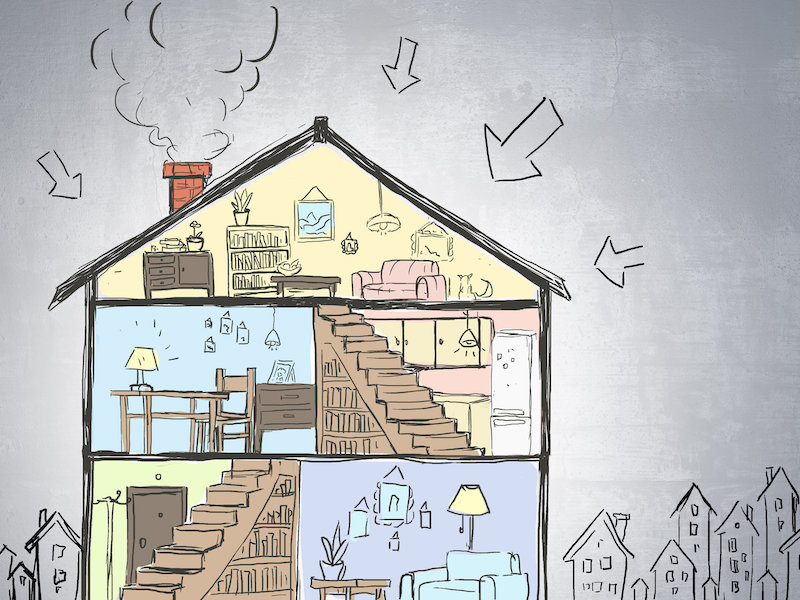If you are a dedicated lifelong learner, then not being able to remember things – particularly things you’ve put a lot of effort into learning – can be really frustrating. So often, though, the issue is not that we have a bad memory; it’s that we don’t really know how to remember effectively.
So, how can you improve your ability to remember?
While there are plenty of tips and tricks out there to help you improve your memory, one of the most time-tested – one that every lifelong learner should have in their toolbox – is the method of loci.
In this post, we’ll take a closer look at what the method of loci is and how to use it as a lifelong learner.
What is the Method of Loci?
Also called a memory palace or mind palace, the method of loci technique is often traced to the fictional brilliance of Sherlock Holmes and his ability to recall a superhuman amount of information. In reality, however, the true origin story of this memory technique is far older.
Dating back almost 2,500 years to around 477 B.C., the method of loci is said to have come from Simonides, a poet of ancient Greece. Legend has it, Simonides watched the roof of a building cave in and crush everyone inside, leaving him as the only one left to remember all the different people who had died. While a tragic event, the experience is said to have inspired the poet to devise a new spatial visualization technique called the method of loci.
Today, this technique is recognized as one of the most effective and powerful ways to strengthen memory. Examples of the loci method include beiung used by world record breakers reciting tens of thousands of digits of pi and even a champion chess player playing 47 opponents at once while blindfolded.
So how does the method of loci work? And what specific value does it hold for lifelong learners?
What is Loci – and How the Method of Loci Works
The reason this particular memorization trick works so well can be found in its name. Loci is the plural of locus, which is just fancy Latin for “a particular position, point, or place” (Oxford Dictionary via Google). It was to do with pairing bite-size pieces of information to a set of locations within a physical space you visualize in your head.
To get a bit more technical, researchers at the University of Westminster, London were able to break down the psychology behind the method: “By converting textual and numerical information into visual, experiential, and spatial information, we can learn, retain, and use that information faster than through other methods, including rote memorization, and pure drilling.” In other words, when we build mental associations with visual and spatial cues, our ability to remember and organize complex information increases exponentially.
Needless to say, this kind of memorization technique can become an extraordinary tool when put into the hands of a lifelong learner.
The Method of Loci and Lifelong Learners
Anyone hopping between many topics of interest will find that being better able to remember what you hear or see brings myriad rewards.
Far beyond merely developing the ability to “store more data,” using a method of loci paves the way to more integrative learning, where knowledge is assembled and recombined to build new mental connections and grow intellectually.
Sometimes this kind of growth takes place indirectly. According to research conducted by several cognitive psychologists, the method of loci plays a central role in developing “self-learning skills.” These skills emerge when the memorization of new information simultaneously helps learners understand and refine their personal learning habits. The natural result being that we learn to iterate on our own learning process, improving how we learn slowly but surely.
Similarly, the method of loci has been proven to strengthen knowledge about the operations of our own memory, leading to what some psychologists have termed “metacognitive sophistication.” This is again crucial for lifelong learners who hope to gain a birds-eye-view of their own learning process—what works, what doesn’t, and how to adjust accordingly.
Another benefit to consider is that the method of loci has been used to prove that strengthening our memory is accessible to everyone, even the elderly! As three Belgian developmental psychologists found back in 1992, the average elderly person could be expected to get their memory capabilities as high as the 77th percentile with simple short-term mnemonic exercises like building a memory palace. “From our results,” they wrote, “it is obvious that even in old age memory remains plastic.”
And, finally, if you’re still not convinced of the value of the method of loci technique, consider the growing body of research being done combining the mnemonic exercise with virtual reality—sometimes even to streamline workplace productivity! Just in the last few years it’s caught the attention of everyone from business professors to computer scientists to med school instructors.
So how do you start making use of the method of loci? Let’s try a simple exercise.
Building Your Memory Palace
The Art of Memory has a concise how-to guide for anyone looking to take a stab at their first memory palace – again, another name for the method of loci. Below is an abridged version to jumpstart the process, but here’s the general idea according to the site’s wiki entry:
“The most common type of memory palace involves making a journey through a place you know well, like a building or town. Along that journey there are specific locations that you always visit in the same order.”
So, first things first: choose a place you feel well acquainted with. It could be your home, office space, maybe the street you live on.
Next, plan a specific route through the space. To illustrate, let’s take the example of your home. You start at the door mat, then move up to the coat hanger, then down to your shoe rack, then into the house toward the doorway in your kitchen, then the sink, then the dishwasher next to it, etc. Visualize as many items as you’ll need to memorize.
Now decide what you want to memorize. It’s easiest to try something simple, like a grocery list. Lettuce, apples, coffee, butter, bread, etc. Starting with 20 items or less is a good rule of thumb.
From here, it’s about building the associations between the items and each location. Try making it comical or eccentric—anything that will help you pair the two together. For example, visualize a head of lettuce bouncing on your floor mat like a leafy soccer ball, then imagine the coat hanger growing an apple like a tree branch, then pretend all the shoes on your shoe rack are full of coffee grounds, and on and on. You can create all sorts of fantastical imagery, so long as it’s memorable.
It’s important to remember that this last step of building the associations is where the majority of the work happens. It’s up to you to cement in your head something that connects the location to the item—and this can be done any number of ways, so don’t be afraid to get creative. Visualizing scenes that draw on emotions, senses, wordplay, and rhymes are all helpful.
Just don’t forget to practice! And don’t worry if you need to swap one location out for another or revise your list of items. You’ll always be able to “re-experience” the memory palace you’ve created through more visualizing.
P.S. — If you want to learn more about the science behind human memory and why it operates the way it does, I recommend taking a look at Memory and the Human Lifespan from Wondrium (formerly The Great Courses).
By Gabe Kahan for Mission to Learn





